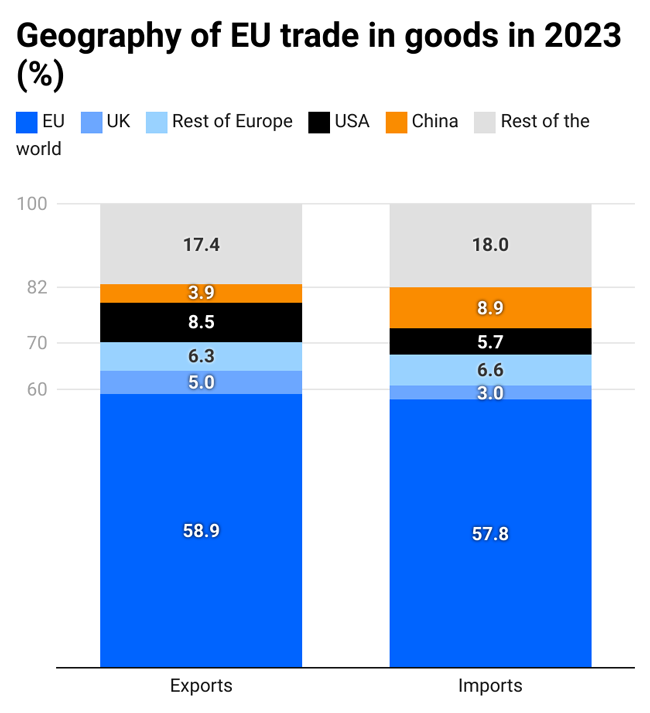
Europe trades mainly with itself
Faced with the protectionist threats from the United States or China targeting sectors that play a significant role in the trade of some of its members, the European Union (EU) might be inclined to present a united front due to the strong interconnection of its economies.
By Deniz Ünal
The openness of the 27 EU economies to international trade is large: 36% of their combined GDP in 2023. This openness is primarily European: 21% of GDP comes from mutual trade flows, compared to 15% with third countries. These flows within the Single Market, free from customs duties and administrative formalities, represent nearly 60% of the Union's exports and imports. If we add those carried out with neighboring non-member economies, all linked to the EU through preferential agreements, this percentage rises to around 70%.
The deep integration of the European production network and the decline in British trade since Brexit make a case for the unity of the 27 against protectionist attacks targeting them individually.
To find out more, see CEPII Profiles.
To find out more, see CEPII Profiles.

Notes: The ‘Rest Europe’ area includes Albania, Bosnia-Herzegovina, Iceland, Kosovo, Northern Macedonia, Montenegro, Norway, Serbia, Switzerland and Turkey, which has been in a Customs Union with the EU since 1995 for manufactured goods.
Source: CEPII Profiles.
Source: CEPII Profiles.
< Back

